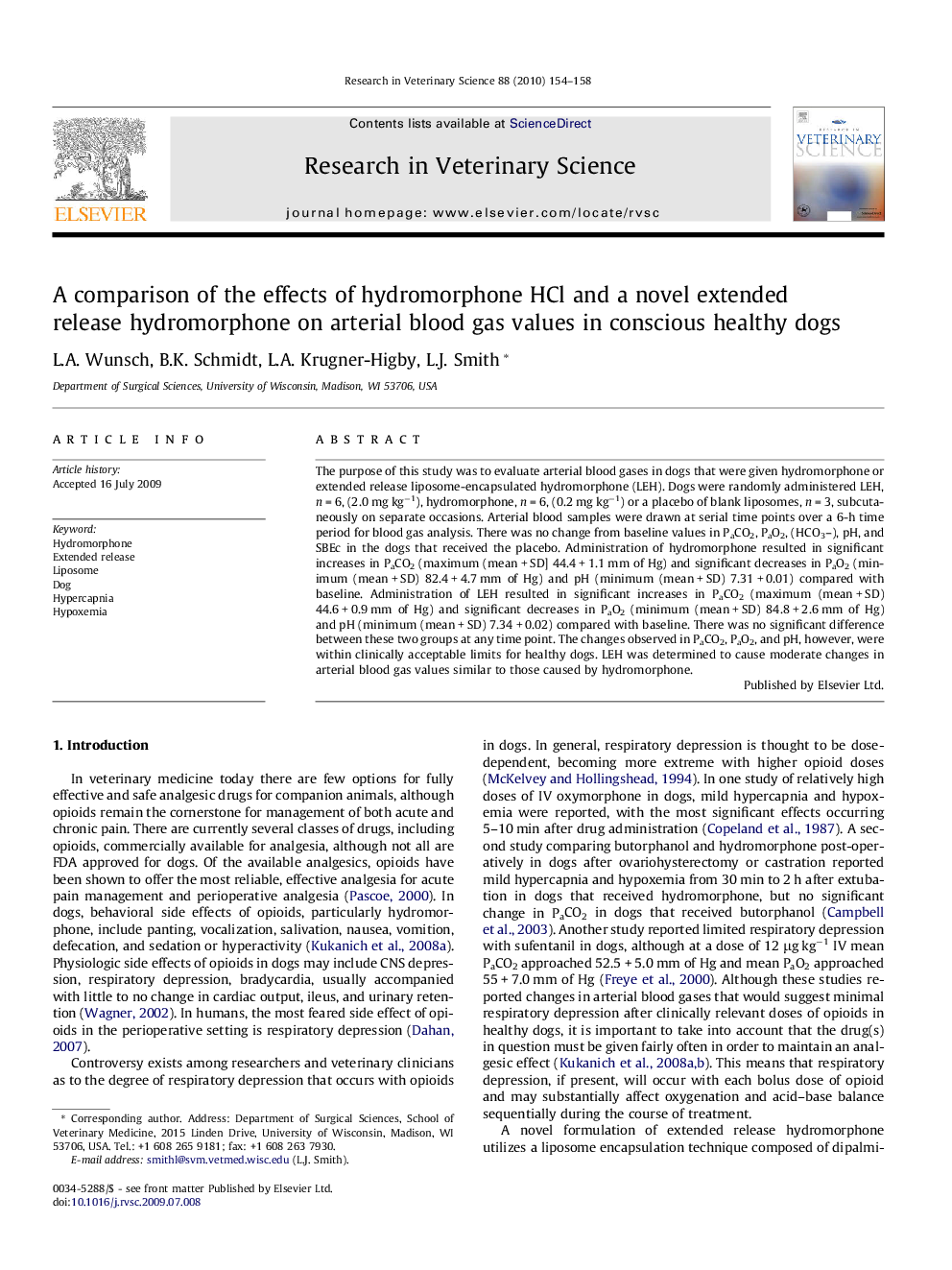| Article ID | Journal | Published Year | Pages | File Type |
|---|---|---|---|---|
| 2456069 | Research in Veterinary Science | 2010 | 5 Pages |
The purpose of this study was to evaluate arterial blood gases in dogs that were given hydromorphone or extended release liposome-encapsulated hydromorphone (LEH). Dogs were randomly administered LEH, n = 6, (2.0 mg kg−1), hydromorphone, n = 6, (0.2 mg kg−1) or a placebo of blank liposomes, n = 3, subcutaneously on separate occasions. Arterial blood samples were drawn at serial time points over a 6-h time period for blood gas analysis. There was no change from baseline values in PaCO2, PaO2, (HCO3–), pH, and SBEc in the dogs that received the placebo. Administration of hydromorphone resulted in significant increases in PaCO2 (maximum (mean + SD] 44.4 + 1.1 mm of Hg) and significant decreases in PaO2 (minimum (mean + SD) 82.4 + 4.7 mm of Hg) and pH (minimum (mean + SD) 7.31 + 0.01) compared with baseline. Administration of LEH resulted in significant increases in PaCO2 (maximum (mean + SD) 44.6 + 0.9 mm of Hg) and significant decreases in PaO2 (minimum (mean + SD) 84.8 + 2.6 mm of Hg) and pH (minimum (mean + SD) 7.34 + 0.02) compared with baseline. There was no significant difference between these two groups at any time point. The changes observed in PaCO2, PaO2, and pH, however, were within clinically acceptable limits for healthy dogs. LEH was determined to cause moderate changes in arterial blood gas values similar to those caused by hydromorphone.
